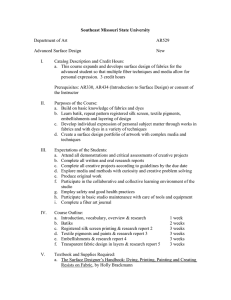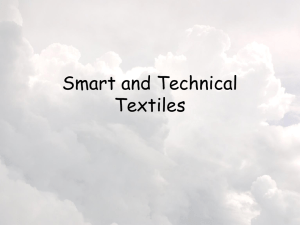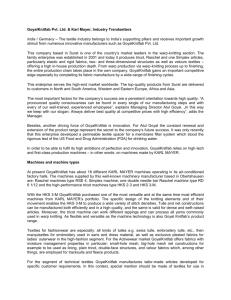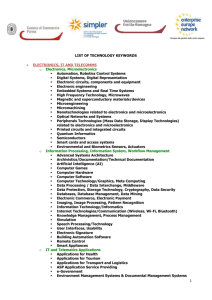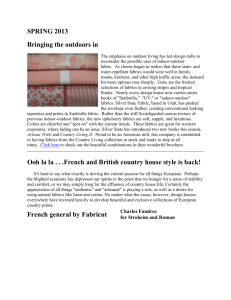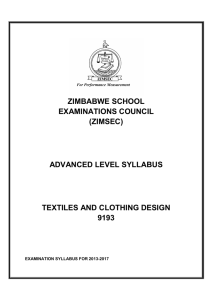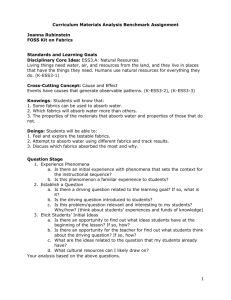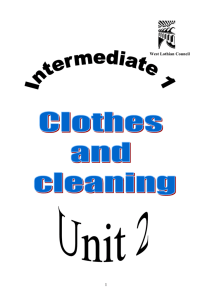Textiles and the environment
advertisement
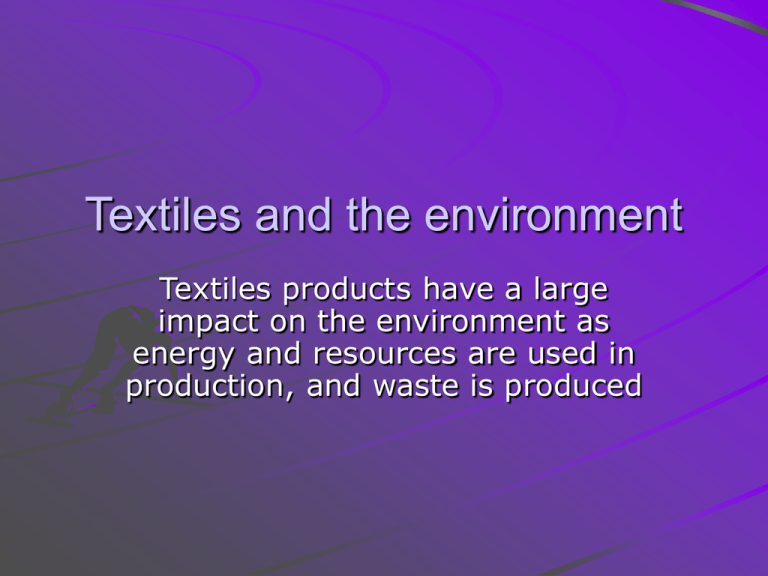
Textiles and the environment Textiles products have a large impact on the environment as energy and resources are used in production, and waste is produced Manufacturing Textiles Dyeing and finishing of fabrics uses a lot of chemicals such as Chemical dyes Resins to make fabrics shrink proof Softeners to make fabrics soft. These produce a lot of chemical waste and also energy is needed to drive machinery and lots of water is used and it is often contaminated. Possible solutions include using cold water dyes as this requires less energy Using renewable energies such as wind and solar. Reducing the need for very dark dyes as these need a lot of rinsing Using natural dyes Using naturally coloured yarns such as cotton. Trying finishes that require less energy Using fabrics that have natural shrink resistant properties. Sustainability Natural fibres and dyes need to come from sustainable sources, that is sources that can be carefully managed so that plants and animals are replaced. As collecting large amounts of wild life is reducing our natural reserves and in some cases can lead to extinction. Scientists are exploring ways of producing victimless leather in a lab from cells. This is called biotechnology. Laundry and aftercare Most textiles products need cleaning and maintaining. This is usually done through washing. Energy is used in washing processesSo create fabrics and clothing that are more easy to care fro. Give more info on labels so consumers can take better care of the fabrics Make products that can be washed at low temperatures. Avoid using fabrics that need dry cleaning. Also look in fabrics that don’t need ironing. Waste textiles Off cuts and waste textiles need to be disposed of. There are ways of reusing and reducing this waste To use computerised lay planning to reduce the waste Use fabric scraps within the automotive industry or for emergency blankets. Look into ways of using the waste. Design Obsolescence The fashion industry encourages us to update our fashions and old clothes that are still in good condition remain used. This leads to goods being obsolete. Fashion industry need to be more responsible in their designing. Disposal The way in which a product is disposed of at the end of its life cycle is critical. If the products are thrown into the bin they will end up in a landfill site or be burnt. By following the following methods we can prevent waste and save energy. We can also reuse and reinvent them through buying good in charity shops or simply reusing what we have.
